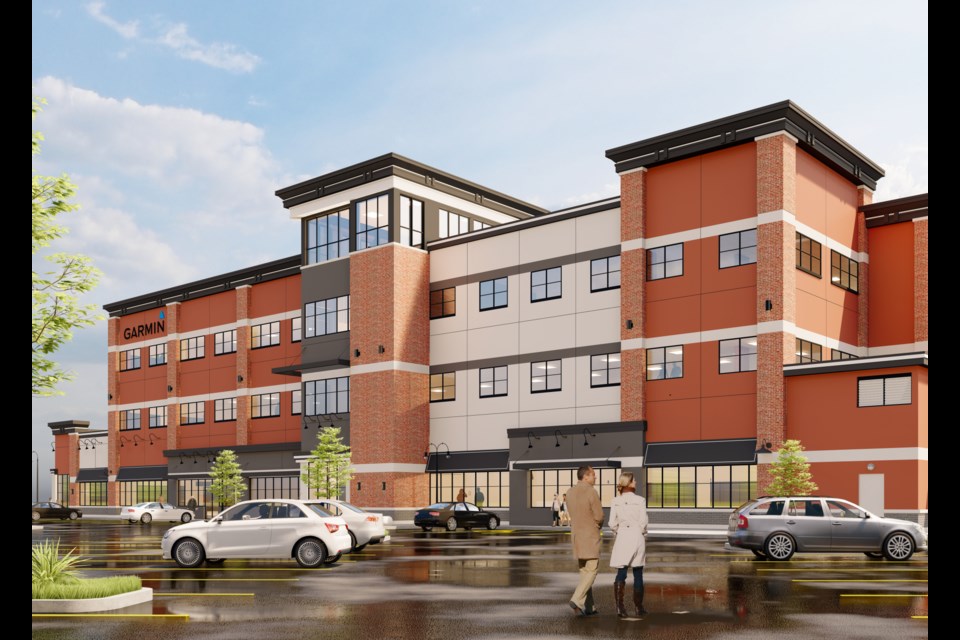Build a better mousetrap, and the world will beat a path to your door.
Garmin Canada’s managing director Jim Rooney personifies the famous quote, which has become a metaphor for innovation.
The hi-tech innovators are investing in Cochrane again, announcing a major expansion to their Canadian headquarters on Feb. 6.
The company expects to create 200 new local science, technology, engineering and mathematics (STEM) jobs. The expansion will double Garmin’s employment in Cochrane and lay the groundwork for even more significant growth that will have the potential of bringing several hundred additional STEM jobs to the community.
Garmin moved into their current building in 2018 and reached capacity in just over four years. Launching over 20 years ago in Jim Rooney's garage under the moniker Dynastream Innovations, the company evolved over the years as it expanded from those humble beginnings.
Standing alongside dignitaries from the Town of Cochrane and the Government of Alberta, representatives from the company unveiled plans for the addition of a third floor to its existing building, with construction to take about a year to complete.
Adding 200 jobs to a town the size of Cochrane is impressive enough. But when the multiplier effect is considered, it’s even more significant.
Based on an analysis of 11-million American workers in 320 metropolitan areas, economic researcher Enrico Morretti argues that not only do innovative industries bring good jobs and high salaries to communities, but their impact is even deeper than that direct effect.
His research indicates that for each new high-tech job in a metropolitan area, five additional local jobs outside of high-tech are created in the long run. So from that perspective, Garmin could eventually be credited with spurring as many as 1,000 new jobs thanks to their latest investment in Cochrane.
All this came on the heels of an announcement from the Canadian Federation of Independent Business earlier in the day that indicated less than five per cent of Calgary’s small businesses were optimistic about the future.
Even in light of all this success, as Cochrane mayor Jeff Genung pointed out, Rooney is noted for being modest.
There are two ‘secrets’ to why Garmin is expanding while many companies are announcing layoffs, according to Rooney: Building a better product, and thinking long-term.
“It’s kind of having that long-term vision and confidence,” he said.
“Is the economy having a hard time right now? Yep. But are we going to come out the other side even stronger? Absolutely.
“We’re just positioning ourselves so we can keep building on that success.”
He said Cochrane is a perfect setting for Garmin, which focuses on products “engineered on the inside for life on the outside.” The active lifestyles of many Cochrane residents was a natural fit.
With over 19,000 associates in 34 countries around the world, Garmin provides GPS navigation and develops wearable technology for the automotive, aviation, marine, outdoor and fitness industries.
Rooney said Garmin is proud to be a vibrant and growing local economic engine, made possible through the combined efforts of the province, Town of Cochrane, and Vantage Land Corporation.
Minister of municipal affairs Rebecca Schulz was also at Monday's event, and pointed to the importance of cooperation between the province and the Town. Specifically, she touted a new funding mechanism to spur investment in Cochrane's growth and development.
“The Cochrane Community Revitalization Levy (CRL) has been an incredible success for Cochrane and Albertans alike. Investment in an under-utilized site has led to the creation of 200 new jobs and a 2,638 per cent increase in taxable assessment growth,” she said.
A CRL is a province-run tool that allows a municipality to dedicate current and future property tax revenue to finance projects in specified zones, spurring development and revitalizing areas where redevelopment might not otherwise take place. Simply put, the CRL allows Cochrane to retain tax dollars that otherwise would be sent to the province, and re-invest those dollars in infrastructure aimed at attracting businesses like Garmin.
Genung echoed Schulz’s promotional opinion of the CRL.
“I’d say it works,” he said, before a sideways glance and grin directed at Schultz, emphasizing the importance of extending the program.
A tour of Garmin’s Cochrane facility is nothing short of impressive. Already a recognized leader in the fitness technology industry, their employees, to a person, exude pride.
Bike riders who want to clip their smart phones onto the handlebars, listen to music, access online maps, and access a built-in running pace coach that not only knows the terrain but lets you know how your body is holding up can thank Garmin for designing and manufacturing the products that make that possible.
Outdoor exercise enthusiasts looking to log daily fluid intake, estimate sweat loss, monitor recovery rates, check their fitness rating, and check texts and email at break time, can do all of that and more thanks to Garmin’s integrated systems on their “watches.” And they’re also solar-powered.
For the less intensive exercisers, Garmin’s smart watches also include maps for 41,000 golf courses around the world.
And for the even less active, it can even tell you what kind of sleep you're having.



